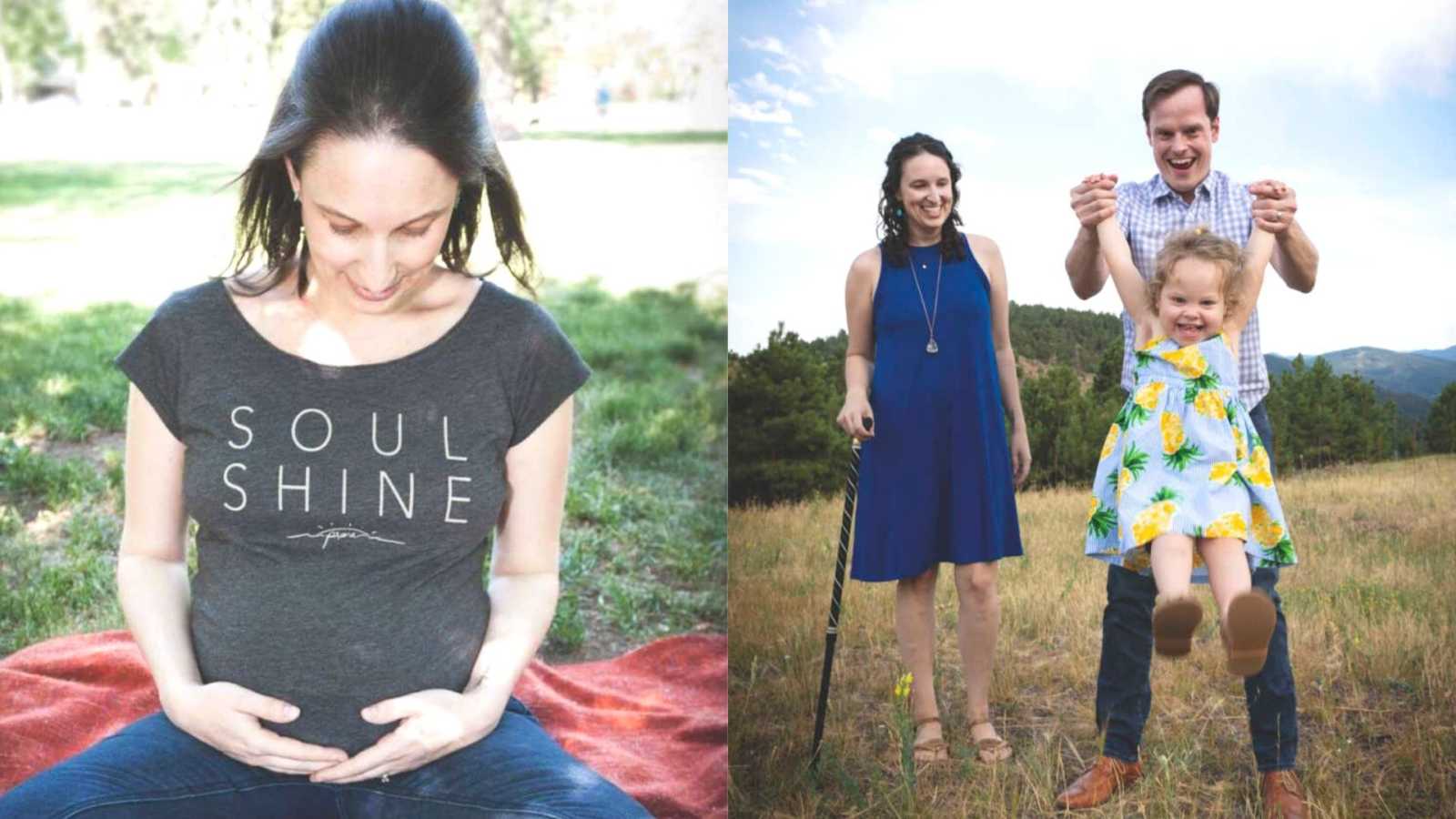Trigger Warning: This story contains mention of miscarriage that may be triggering to some.
“I’ve lived my whole life in pain. Pain is supposed to help us, to tell us when something is wrong. For example, when you get bit by a tiger and you later face that tiger again, it’s natural and healthy for your body and mind to warn you. But as a chronic illness warrior, I have a different relationship with pain. As a young girl, people told me to stop complaining and to push through. As an athlete, coaches told me to push through. As a tall girl, doctors told me it was growing pains and to push through. So, I kept pushing through. I continued playing sports, captained teams, and was a starting player. My knees would dislocate while I was running… I’d pause a moment to pop them back in and keep running to catch up.
Finally, when I had to default a tennis match because I could no longer push through the pain… I was told my pain wasn’t normal. I was 15 when we started going to doctors to find answers for my pain. But when we went to doctors, I didn’t get answers. Instead, I entered into a world of discrimination and trauma. ‘You’re too young,’ ‘You don’t look sick,’ ‘Your tests came back fine,’ ‘You just want attention,’ ‘It’s all in your head,’ ‘You just want pain meds,’ ‘You don’t need a referral, just do yoga.’ Doctors made me question the excruciating symptoms that diminished my quality of life.
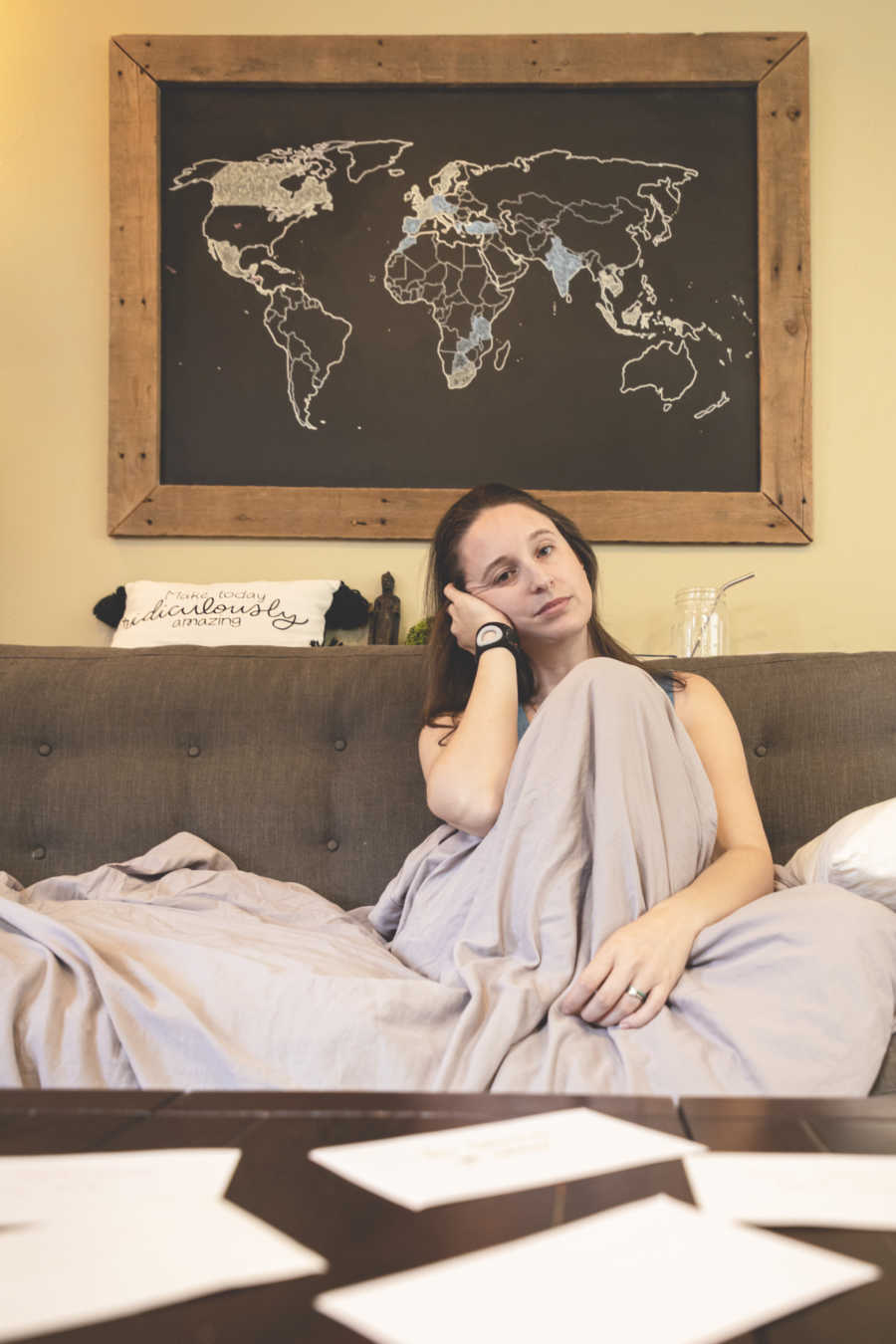
Living with a rare invisible illness is HARD. First, you have to understand your symptoms and VERBALLY explain them to a doctor. Then you need a doctor who will disregard the discriminatory stereotypes and actually LISTEN to you. But even though they listen to you, it doesn’t mean they believe you. And even when you find a doctor who listens AND BELIEVES YOU, they need to KNOW ABOUT RARE DISEASES. I spent 29 years of my life thinking I was weak and it was all in my head… but finally, I found a doctor who listened to me, believed me, AND knew about rare diseases. The rheumatologist who changed my life, walked into the exam room, took one look at my chart, and one look at me and said, ‘It’s not lupus.’ Words I’ll always remember. Even thinking about them transports me right back into the exam room.
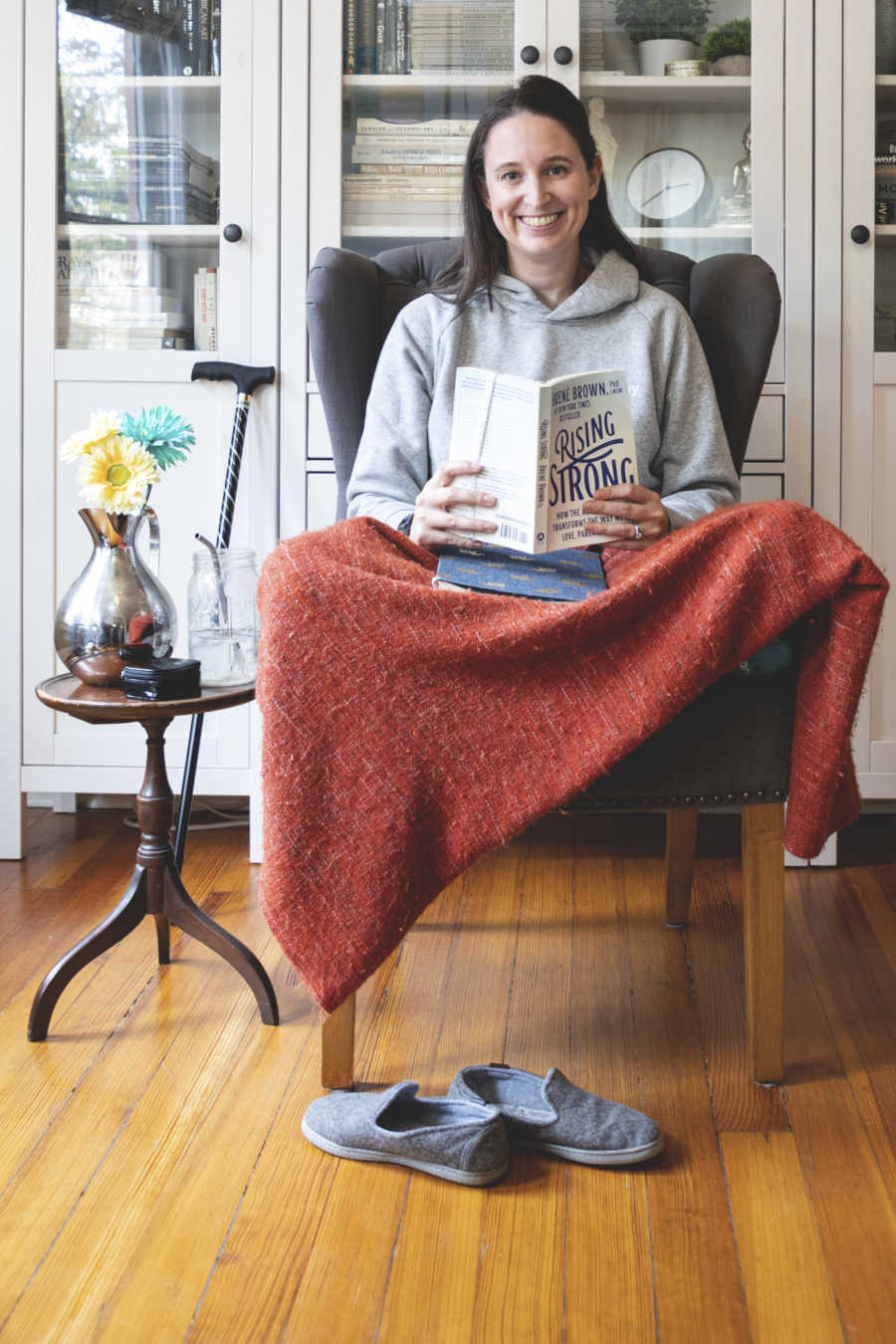
It took 14 years, but she validated my symptoms, told me it was all real, and told me I was incredibly strong to live with this level of pain. She also told me I shouldn’t walk for more than 10 minutes. For context of how badass chronic illness warriors are, I was still skiing the Rockies. She diagnosed me with hypermobile Ehlers-Danlos syndrome (hEDS), fibromyalgia, osteoarthritis, and degenerative disc disease. One year later, I was diagnosed with postural orthostatic tachycardia syndrome (POTS), and then this year I was diagnosed with gastroesophageal reflux disease (GERD) and vocal cord dysfunction and started allergy shots for extreme allergies.

But just having answers isn’t everything. Within the year I was diagnosed, the rheumatologist who changed my life passed away. My case was transferred to one of her partners (who quite honestly should not be practicing medicine). I felt like I traveled right back to being 15 years old—he didn’t believe me, told me it was all in my head, and wouldn’t treat me or give me referrals. But at this point in my journey, I knew better. I knew I could fire him and find a new doctor. But not before I asked him to write his opinions in my chart. Pro tip: if a doctor won’t order a medical test or give a referral, ask them to write that into your medical records. You can say, ‘Please make a note you wouldn’t explore this option and/or recommended against trying this treatment.’ Most times they’ll reconsider.
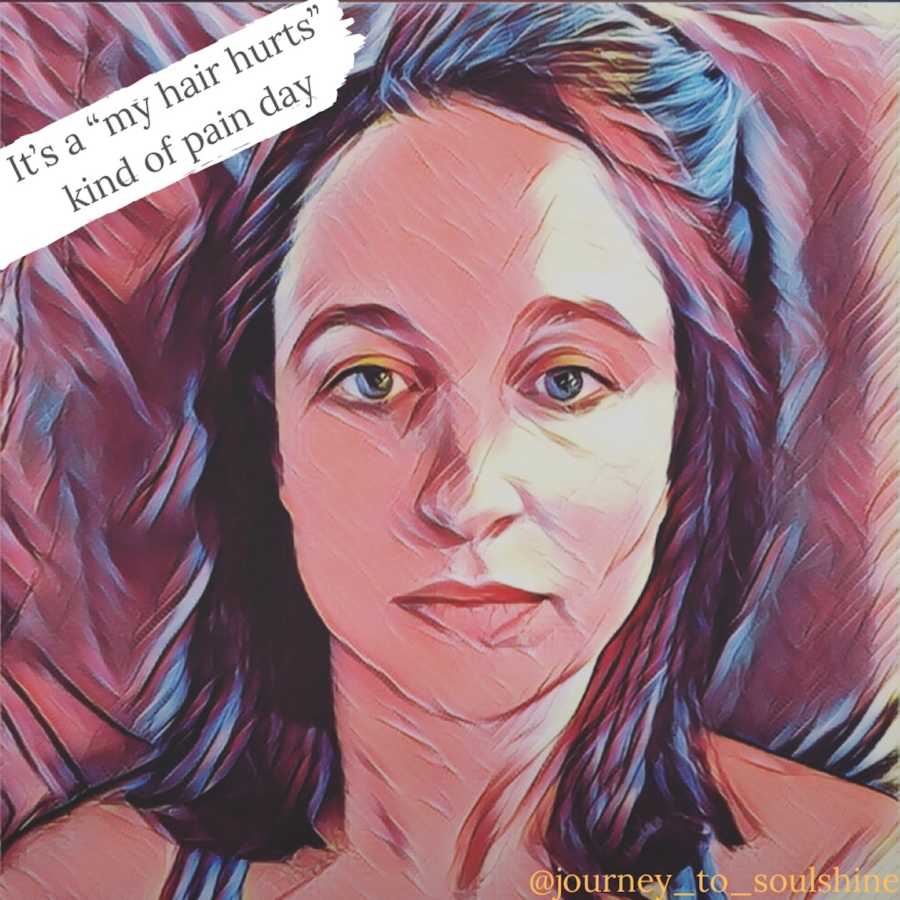
One thing my health journey has taught me is the importance of believing in myself. What I feel in my body is REAL and I will not tolerate people telling me otherwise. I now view my team of doctors as a ‘health board of directors.’ Each serves a different role and each is important. But if they don’t listen, believe me, or know about my conditions—I fire them. Having answers AND a team of doctors who support me gave me a whole new outlook on my health. If you’re still searching… keep going. And advocate like hell.
I have labels for all my weird symptoms: the different types of pain, fatigue, hypermobility, joint instability, subluxations, musculoskeletal pain, dizziness, tachycardia, low blood pressure, slow gut motility, shortness of breath, sensitivities to touch, taste, smell, sight, sound, and temperature.
I found proper treatment—I traveled to The Mayo Clinic’s Fibromyalgia Clinic to learn how to live with these illnesses. I now have a team of doctors composed of several specialists and therapists (physical, mental, occupational, and speech). I learned about biofeedback, diaphragmatic breathing, somatic experiencing, and other lifestyle changes that help me manage my symptoms.
I can identify triggers (bad weather, activity, etc) and understand—and communicate—flare-ups. I can plan my time and know when I’ll need to rest more.
I started asking for help. Trusting myself when I thought something was wrong. Realizing how resilient and STRONG I was.
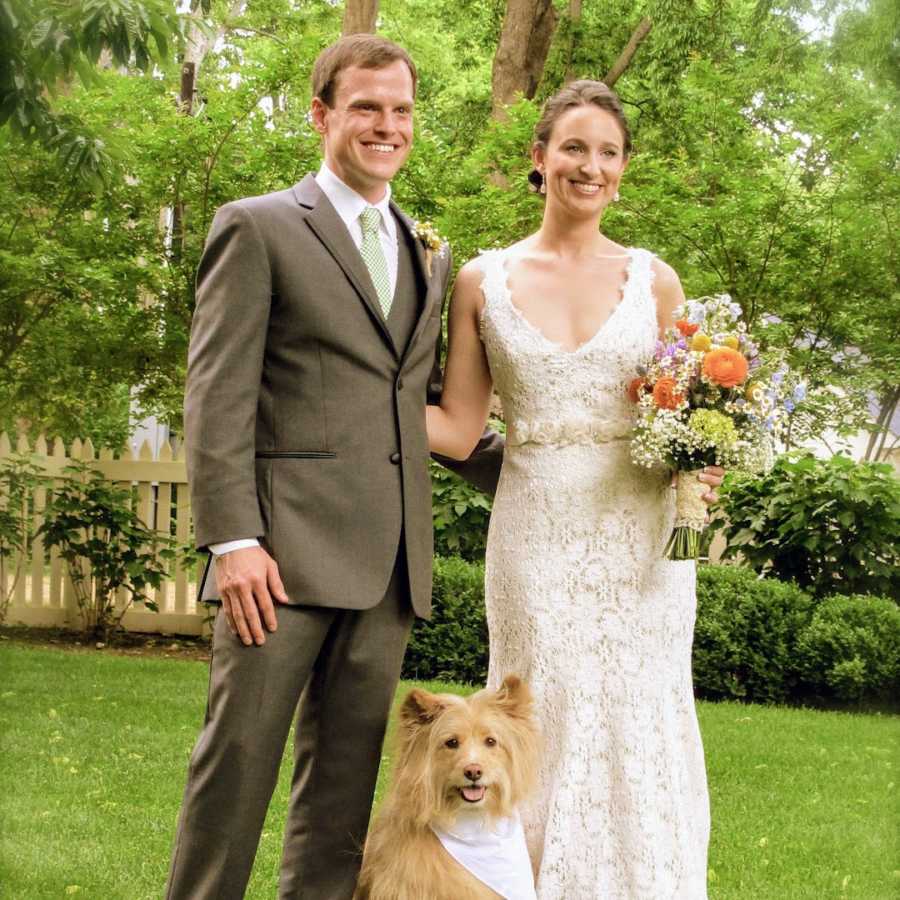
And I’d need a lot of strength for the next part of my journey. Because after 14 years of searching for answers for my pain, I faced infertility. Like many women, I needed medical intervention to get pregnant. And then, like 20% of known pregnancies, I miscarried. And no, none of this was connected to the many chronic illnesses I have. My pregnancy hormone kept increasing instead of decreasing, and so I was referred to a gynecologic oncologist who told me, ‘We now know your miscarriage is a partial molar pregnancy, where the placental tissue is growing like cancer. We need to do chemo. Once we know the chemo has worked, you’ll need to wait another 6 months before restarting fertility treatment.’
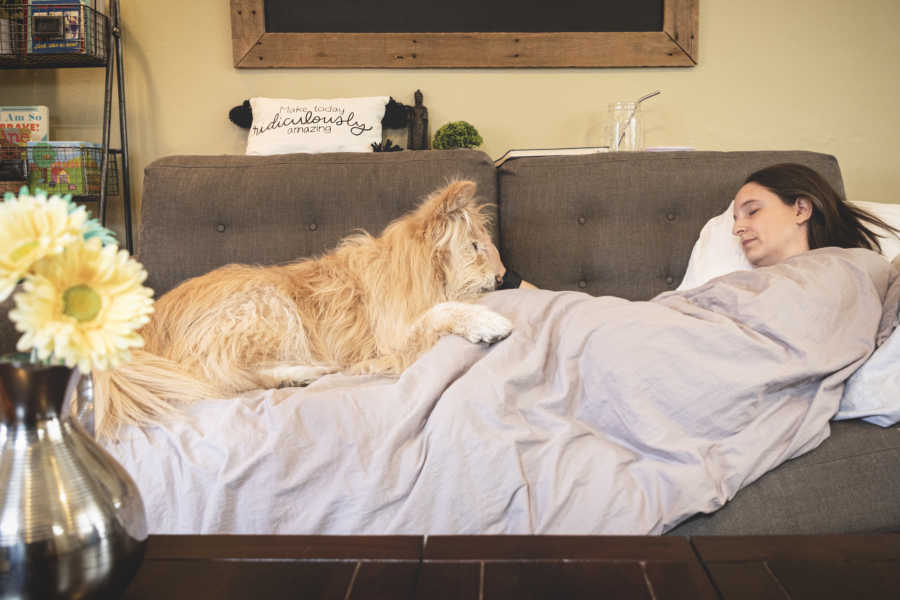
This is when my story really changed. I was finished feeling like a ‘victim’ of circumstance and decided to DO SOMETHING. I threw a chemo party, complete with bright yellow ‘chemo drinks.’ Because what else do you do when a pregnancy you have worked so hard for (fertility treatment) results in chemo? I filled my house with love and laughter. And filled a journal full of love and support from friends. I communicated my needs and accepted support. I was vulnerable, and it was worth it. After we knew chemo worked and we’d be waiting 6 months for more fertility treatment (and ironically need to take birth control during that time)… I committed to accepting my health journey. I faced my own self-judgment of needing a mobility aid and l started using a cane, personalizing ‘her’ with stripes and giving her the name ‘Candy the cane.’
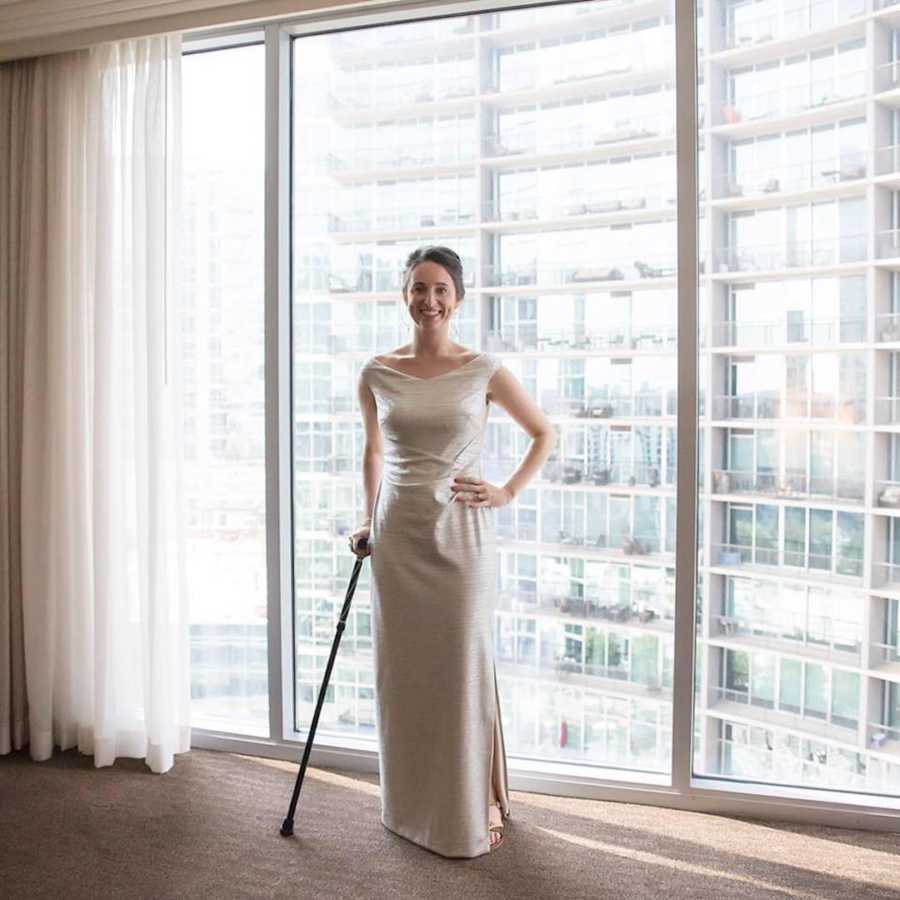
I started using a service dog, a handicap placard, and the word ‘disabled.’ I spoke up in doctor appointments and felt empowered making medical decisions. I was accepting the journey. And shifting my focus from my limitations to using all the tools and resources to help me feel better, both physically and mentally. Moving from ‘can’t’ to ‘can.’ I’ve learned I can feel both frustrated by my health AND love my life at the same time. After three more rounds of fertility treatment, I was finally pregnant with my rainbow baby (a baby after loss). 3 days later, I also learned I had mono. (I can’t make this up!) Thankfully, I had minor issues throughout pregnancy and was induced at 39 weeks. And it all culminated and intersected during labor and delivery. I spent months preparing for that moment.
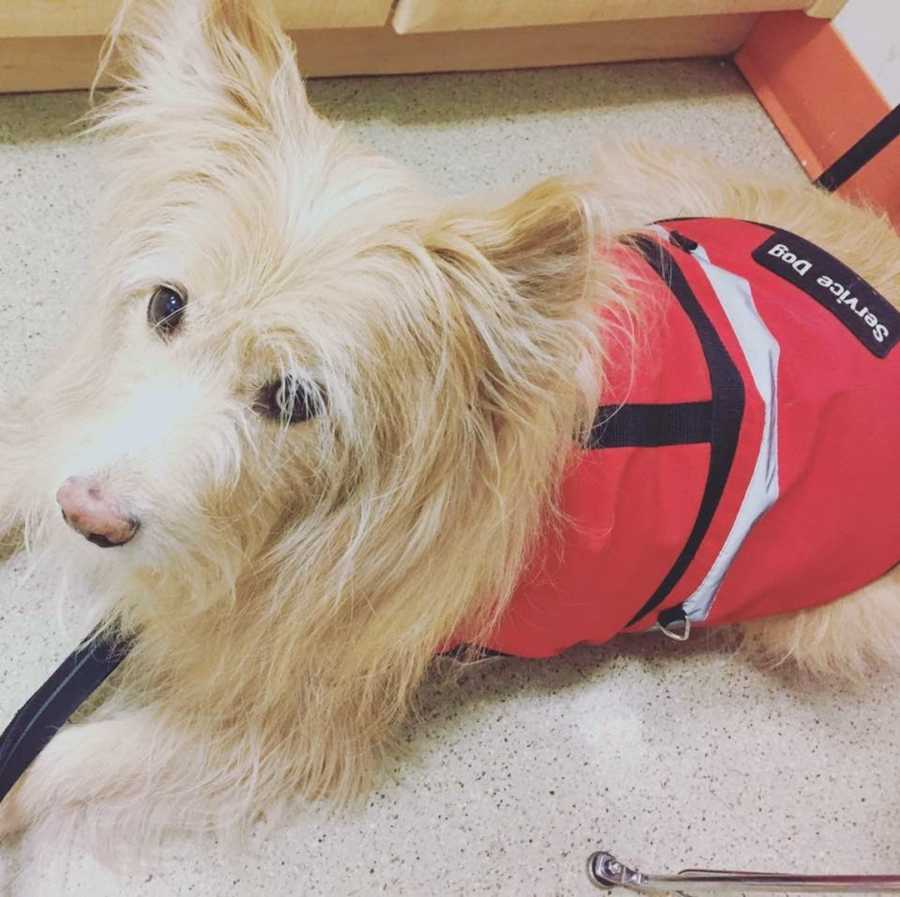
A moment that should have been the most painful and stressful of my life—combining my symptoms of chronic pain, fatigue, subluxations, low blood pressure, passing out, etc., and my fears around loss after my miscarriage and molar pregnancy… and yet it was incredibly peaceful, and the only tears I had were tears of joy. The work I did to prepare was to picture myself in labor—a full body of pain, with an intense fear of loss. Instead of resisting the feeling, I welcomed it. Every interaction, whether it was holding one of my legs up (which could dislocate a hip), pressing on my stomach (which causes it to flare for several days), or having nurses ask if it was my first baby (my answer was always second pregnancy, first baby… I spend a lot of time re-educating medical professionals), it was all part of the experience to get me closer to holding my baby girl.
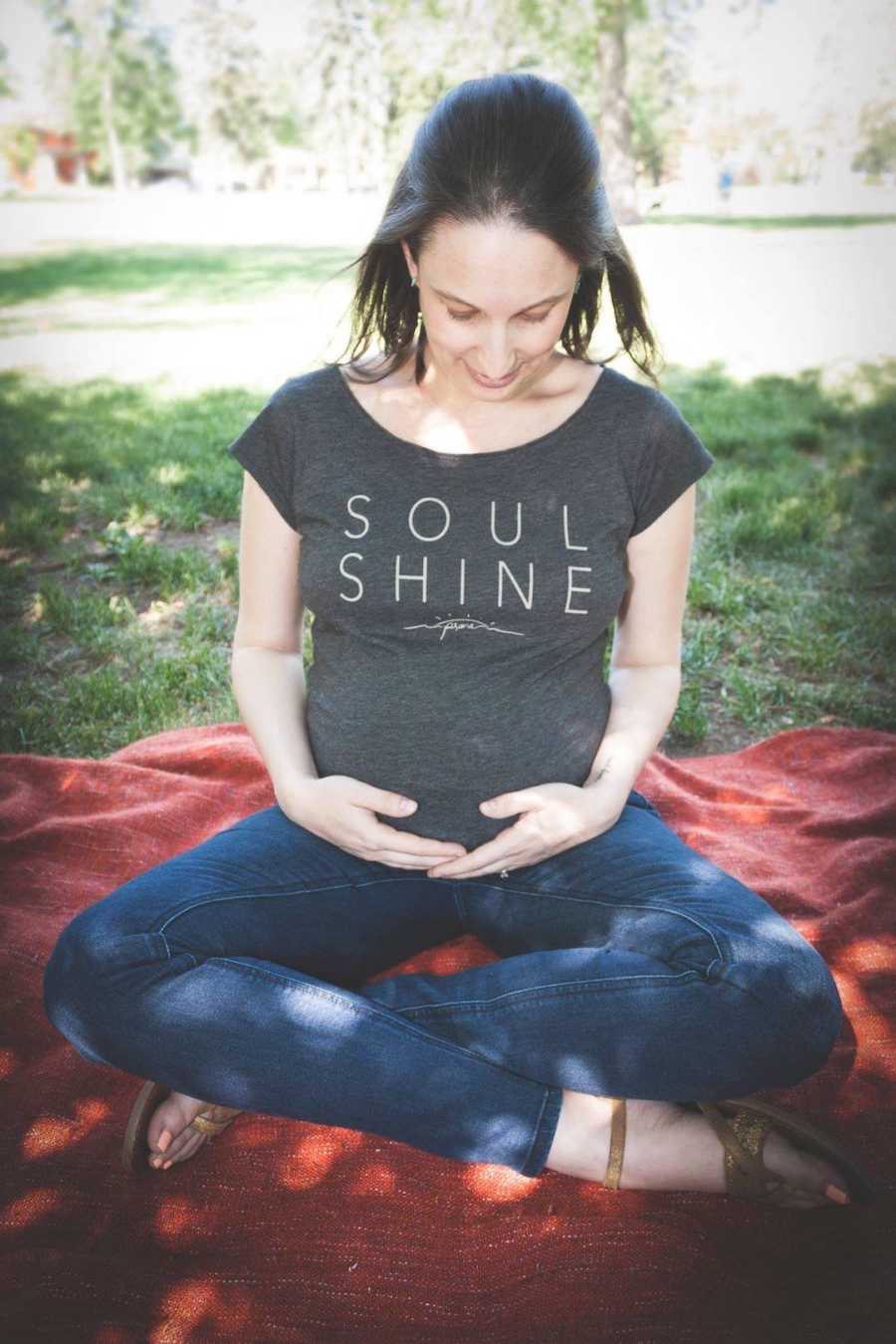
When we checked into the hospital our nurse walked through my medications and illnesses. Afterward, she looked up and just said, ‘Wow, I’m so sorry.’ And all I could think was… it’s okay, because we’re here! We’re so close and we’re here! I breathed into my contractions. I savored them, knowing some women don’t make it to this stage in their infertility journeys. I could even predict my contractions from a faint feeling of shortness of breath, something my doctor had never seen before. I was THAT connected to my body. Every push was a step closer. I took breaks and did breathing exercises, resting between contractions and even napping for those couple of minutes. We had calm music playing and my husband held my hand and advocated for my needs. Despite all the medications I was on, the tubes I had coming out of me, and the anticipation… I felt supported and I felt ready.
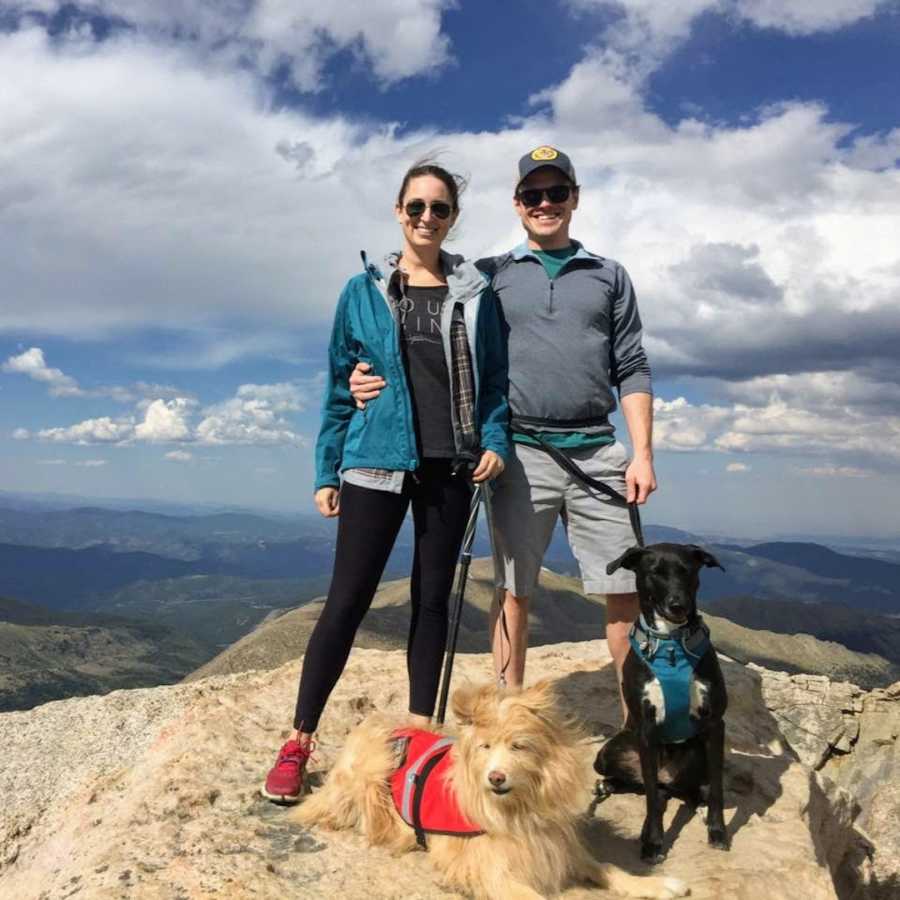
On July 3, 2018, we welcomed our baby girl, Liliana Rae, with no complications. She was perfect and I recovered well. I went on to exclusively breastfeed her for 15 months (my body did something right!), and she has grown into a strong, sassy, smart, and incredibly sweet 2.5-year-old. As a chronically ill mom, I get these questions ALL THE TIME: How do you handle your chronic illness and being a mom?! You make it look possible… but can I really do it, too? What does it REALLY look like?? So, here are five things I do as a chronically ill mom:
1. Acknowledge expectations vs. reality: Be realistic with what you can do and ask for help. Early on, my husband and I identified activities like bathing, carrying, or exercising would technically be possible for me, but would have a huge impact on my body, so whenever possible, these are ‘dada jobs.’
2. Never make your health their fault: The language we use is SUPER important. My disability is NOT Lily’s fault, and I don’t ever want her to feel responsible. ‘Mama’s body needs to rest,’ and not ‘You’re too heavy, you don’t want to hurt mama, right?’ Nope nope nope!
3. Always give them another option: Just because my husband and I decided ‘carrying Lily’ is a ‘dada job,’ doesn’t mean she doesn’t ask me all the time. Instead of just saying no, I always give her options: ‘Have you asked dada?’ ‘What if we race to the bench?’ ‘Can you hold my hand instead?’
4. Include them in your treatment plan: Lily helps me with my cane (Candy the cane)— ‘Mama, you need Candy? I get her for you.’ She helps me count my medicine, does my physical therapy exercises with me, and tucks me in, and gives me hugs and kisses when I need to rest. She knows mama’s body needs more rest, and that it’s okay.
5. Hype up doctor visits: Some of us with a genetic condition can pass it down to our kids. Lily has a 50% chance of having EDS. I am very conscious of the negative relationship I’ve had with doctors, and I want to do all I can to change this for her. So I always talk about the doctor’s office as the COOLEST THING EVER. And she actually gets jealous when I have an appointment and she can’t come.

We always said parenting would look different for us. And maybe it could benefit Lily—she could have tons of empathy for invisible illness. Whether she grows up to be able-bodied like her dad or disabled like her mom, I’ll show her there’s still joy in the journey, and she can let her soul shine. And I share this with others, too. In fact, I’ve made helping people on their health journeys my profession with my business, Journey to Soulshine Coaching, LLC. I combined this passion with my personal experience and my background in human development, my undergraduate and master’s degrees, and my coaching certifications, to create a business dedicated to helping people live happier, deeper, and more fulfilling lives.

I am continually impressed by my clients who learn to advocate, communicate their symptoms, needs, and emotions, accept their journey, and ultimately write their own stories. They shift their energy from trying to control the unknown outcome to focus on the present moment. They shift their focus to steering the boat, rather than trying to calm the waves. It’s hard to believe it’s been 20 years since I started on my medical journey. If I could talk to my 15-year-old self, I’d tell her not to wait to live her life. Don’t wait for the diagnosis, or the treatment, or to have a baby to find happiness. Learn to live life and SHINE THROUGH those moments. Throw out unhealthy expectations (like a 30-something can’t use a cane), and do what you need to feel happy NOW.
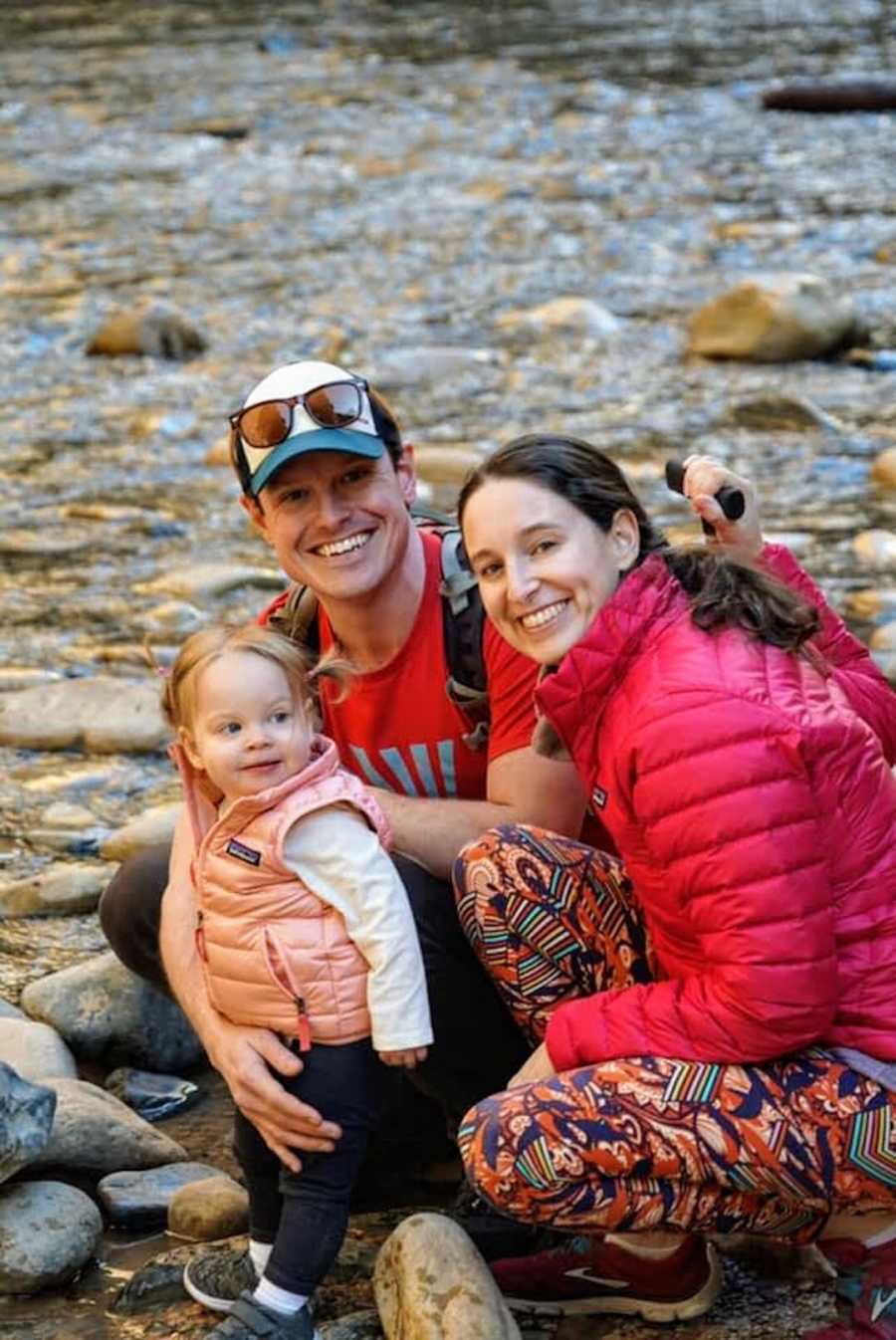
My journey has been one of adversity and triumph. And I’m proud of it. I’m proud of who I am—not despite these experiences, but because of them. So please remember, when your body won’t shine, let your soul shine.”
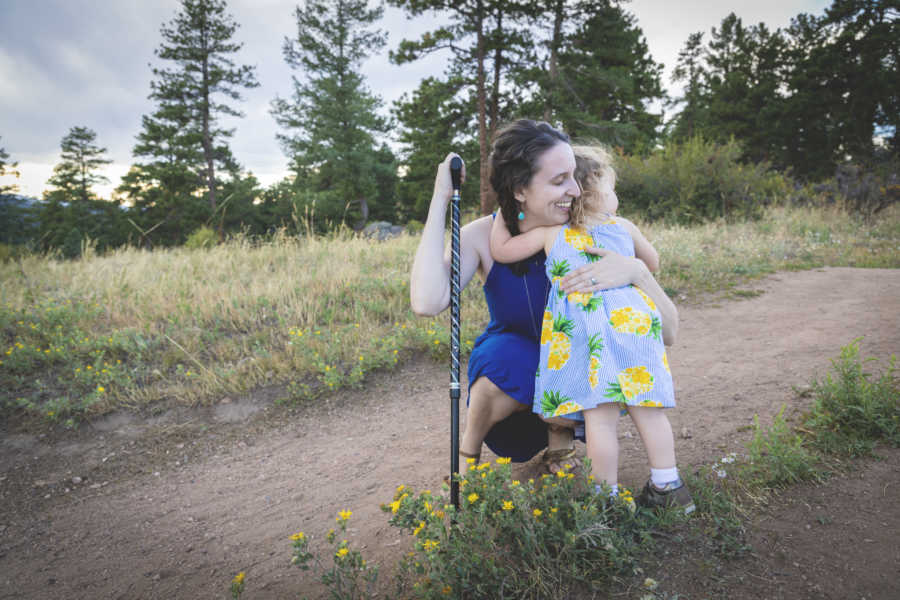
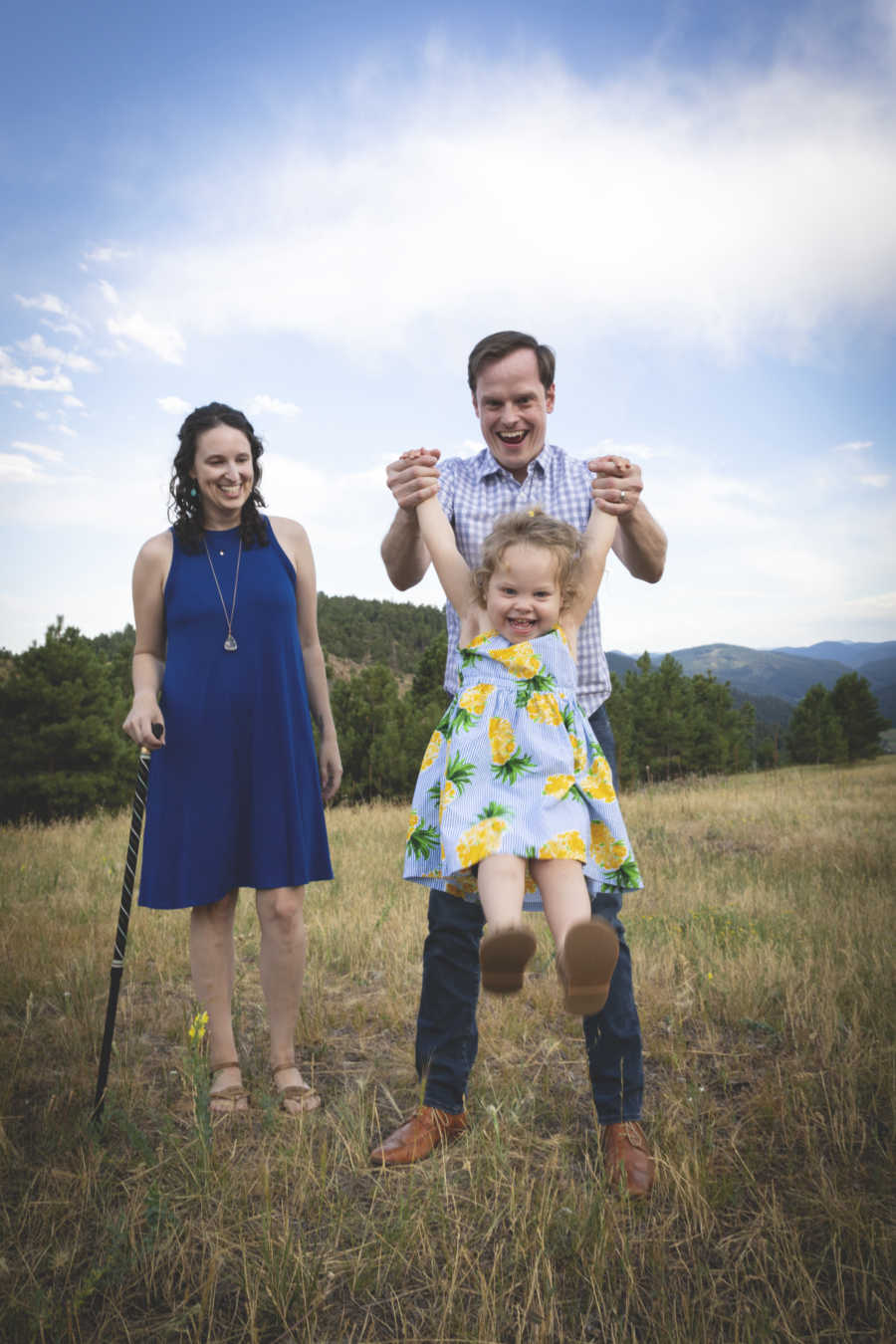
This story was submitted to Love What Matters by Kelly Fullerton, MEd, PCC, of Denver, Colorado. You can follow her journey on Instagram and her website. Submit your own story here, and be sure to subscribe to our free email newsletter for our best stories, and YouTube for our best videos.
Read more from chronic illness warriors here:
Do you know someone who could benefit from reading this? SHARE this story on Facebook with family and friends.

